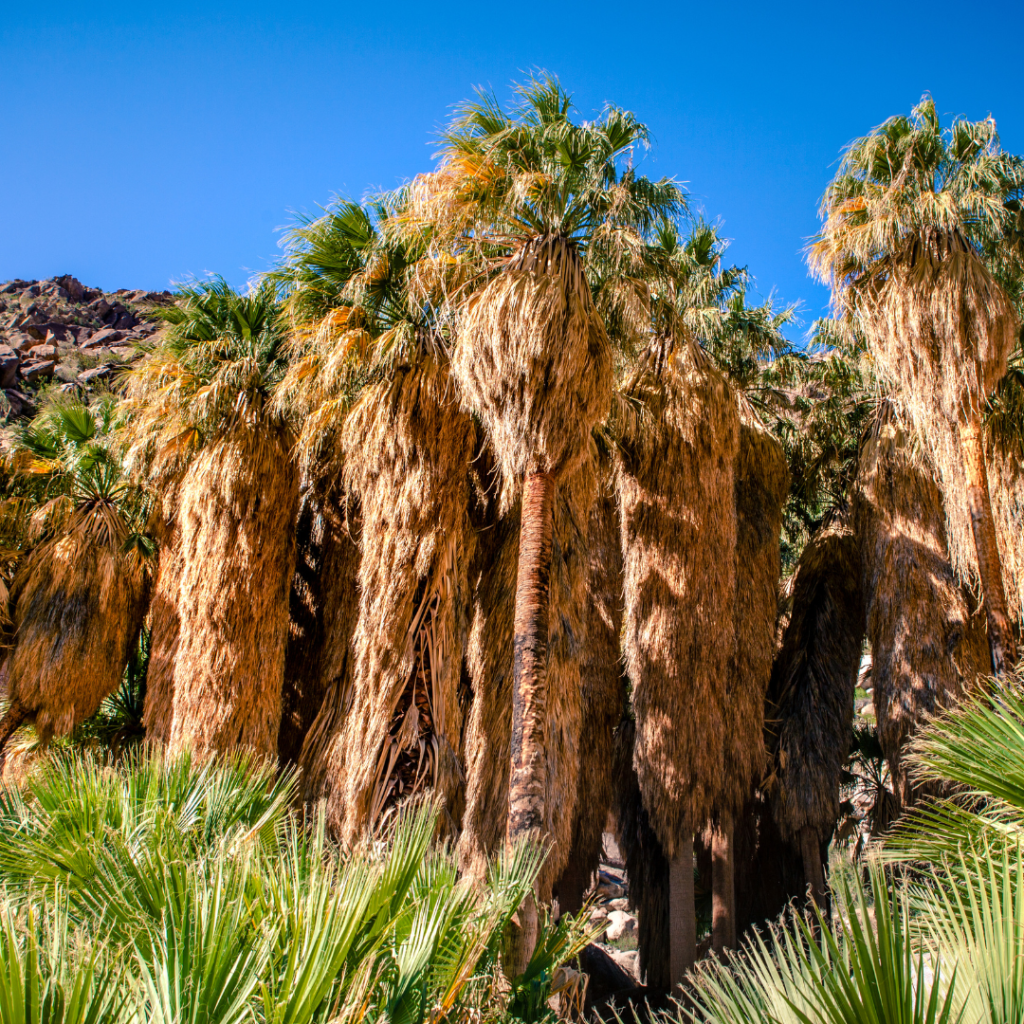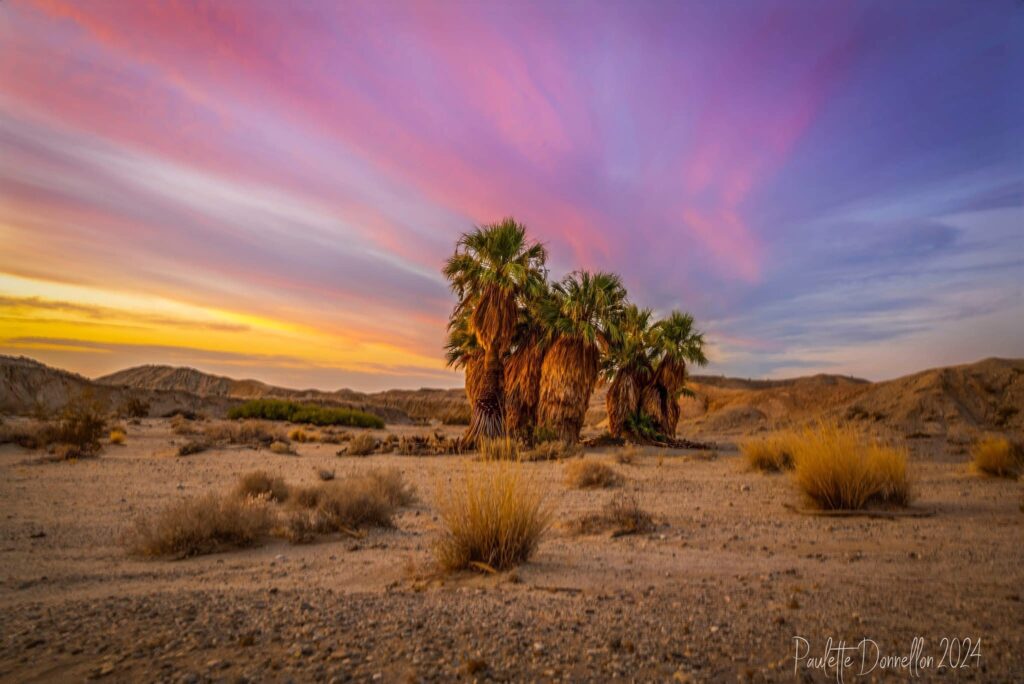(Washingtonia filifera), the California desert fan palm is native to Southern California’s low deserts, including Anza-Borrego Desert State Park. These palms can live for up to 90 years, reaching heights of 75 feet and weighing up to three tons. Their fan-shaped leaves can grow up to six feet long, often forming “petticoats” of dead fronds around the trunk until removed by wind, fire, or floods.
Mature fan palms are highly fire-resistant due to their scattered vascular bundles, which insulate the trunk. While fires can kill young palms, they clear competition and stimulate seed production. A single healthy palm can produce up to 350,000 seeds, thriving in fire-adapted ecosystems.
Indigenous tribes, including the local Cahuilla, used palms for food and shelter. They also used fire management to enhance fruit production and clear undergrowth. Today, these oases support unique wildlife, including western yellow bats and various birds, who nest under the leaves. Coyotes spread seeds after eating the fruit, helping palms establish new growth.
While fan palms thrive near water, flash floods in narrow canyons often threaten their survival. Beetles, like the giant palm-boring beetle, contribute to the ecosystem by inhabiting older palms, keeping populations vibrant.
Want to visit a palm grove? Borrego Palm Canyon holds one of the largest palm groves in the region and is accessed by a three-mile moderate hike from Borrego Palm Canyon Campground.
Fan palms may look robust, but they are sensitive to overuse. Stick to trails, avoid stepping on seedlings, and help ensure these oases remain healthy for generations to come.
Additional Facts:
- The largest populations of California desert fan palms are found in the Coachella Valley, but they are scattered across many desert oases in the region.
- Palm oases are among the rarest habitats in North America, as they require a constant water source to survive.
- In addition to the giant palm-boring beetle, fan palms are home to red-naped sapsuckers, orioles, and tree frogs.
- The fruit of the fan palm is small and sweet, resembling dates, and was historically used by Indigenous tribes to make flour or eaten raw.
- Palm groves act as natural markers for underground water sources, often signaling the presence of springs or shallow aquifers.
- Despite their fire resistance, fan palms can be harmed by extreme drought conditions and human interference, such as groundwater depletion.
- Borrego Palm Canyon’s grove is one of the last remaining native fan palm oases in the Colorado Desert region.






